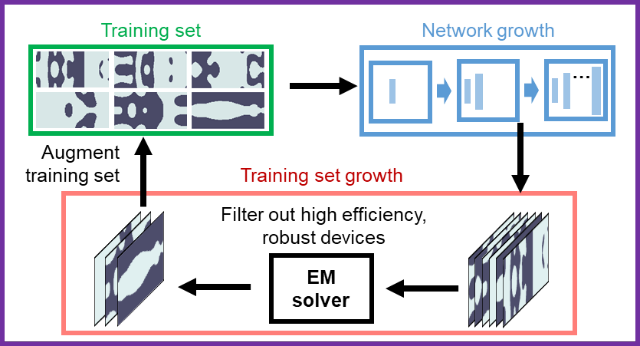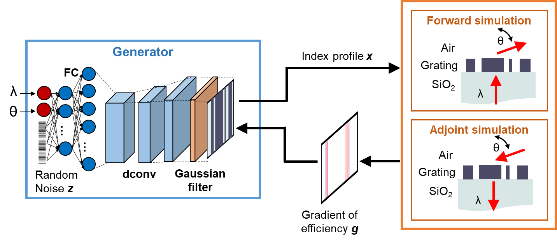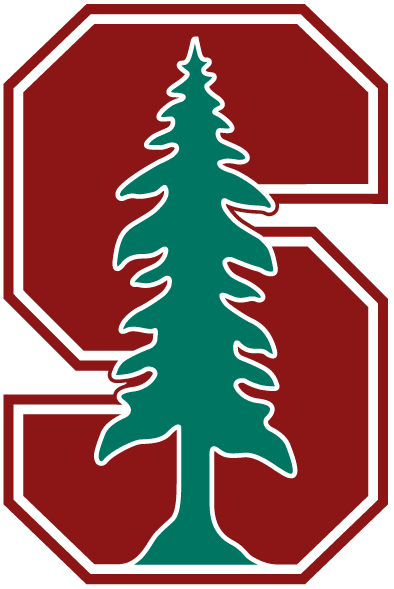Deep Learning for Inverse Design
Tutorial on the Simulation and Design of Photonic Structures Using Deep Neural Networks
Slides for the tutorial can be downloaded here. Slide materials largely follow this article.

Generative Adversarial Networks (GANs)
GANs are algorithmic tools from the machine learning and computer vision community. The network training process involves a competition between a discriminative network, which attempts to differentiate between training set devices and those produced by the generative network, and a generative network, which attempts to fool the discriminator by generating realistic devices. Upon the completion of training, the generative neural network learns to generate images that mimic and interpolate a training set distribution. We show that GANs can learn from training sets comprising images of freeform topology-optimized photonic structures, in a manner that can effectively expedite the inverse design of large classes of related structures. We also show that a cycle GAN based on progressive network growth can generate robust metasurfaces with performances comparable to the best topology-optimized devices.

Global Topology Optimization Networks (GLOnets)
It remains an open question how to effectively find the global optimum within a photonic design landscape. These landscapes are highly non-convex, meaning there exist many local optima that prevent advanced gradient-based methods, such as the adjoint variables and objective-first methods, from effectively searching for the global optimum. We have developed new algorithms, termed GLOnets, which reframe the global optimization problem as the training of a generative neural network. No training set is provided, but instead, generated devices are evaluated using an electromagnetic solver to improve the mapping of latent variables to high performance devices. Benchmark demonstrations indicate that GLOnets are effective and computationally efficient algorithms that can reliably solve for high performance devices. GLOnets can be extended to perform multi-objective and categorical optimization problems, and they can be reparametrized to enforce strict design constraints.
MetaNet: a resource for sharing code
We have started a database for the optics community to share design codes and device layouts for nanophotonics inverse design, to promote collaboration, enable proper benchmarking, and expedite progress in the field. For codes and design files from our group, please visit metanet.stanford.edu.
If you are interested in contributing in any way, please contact us.
